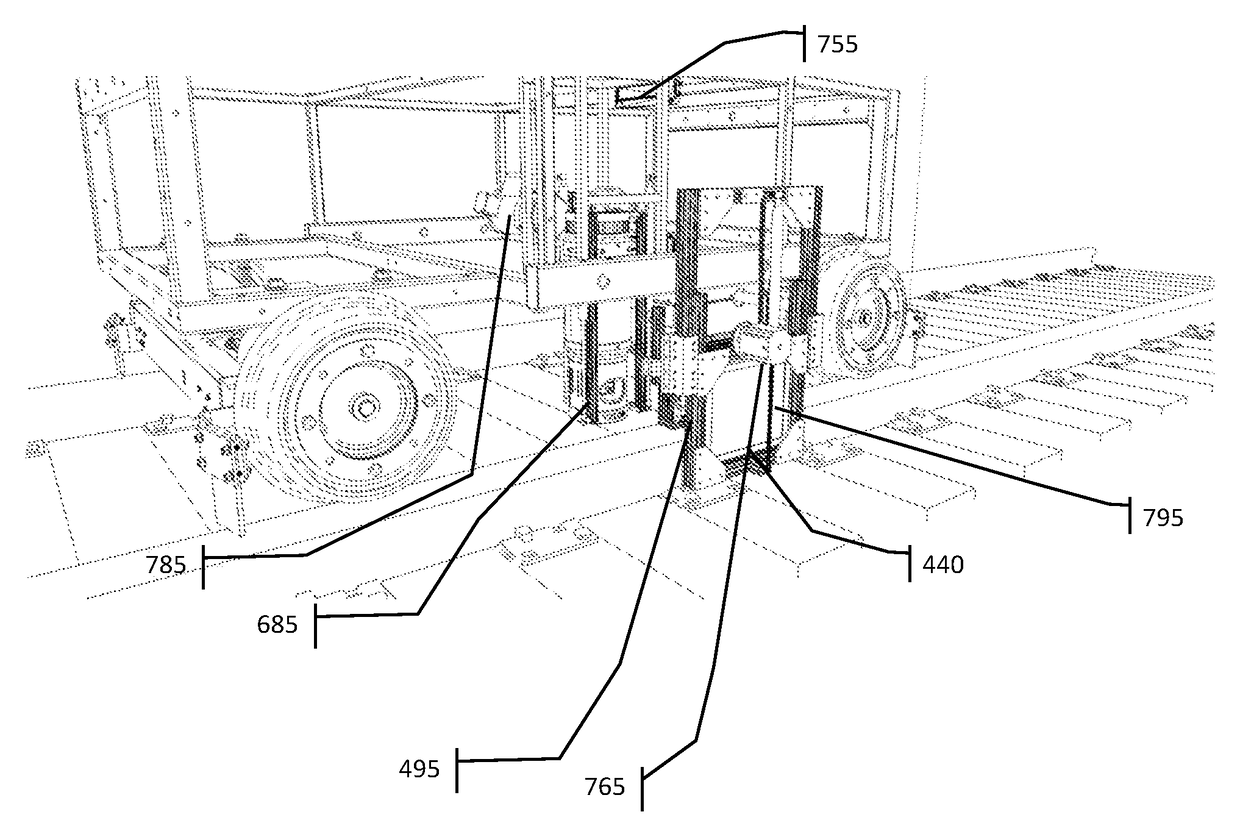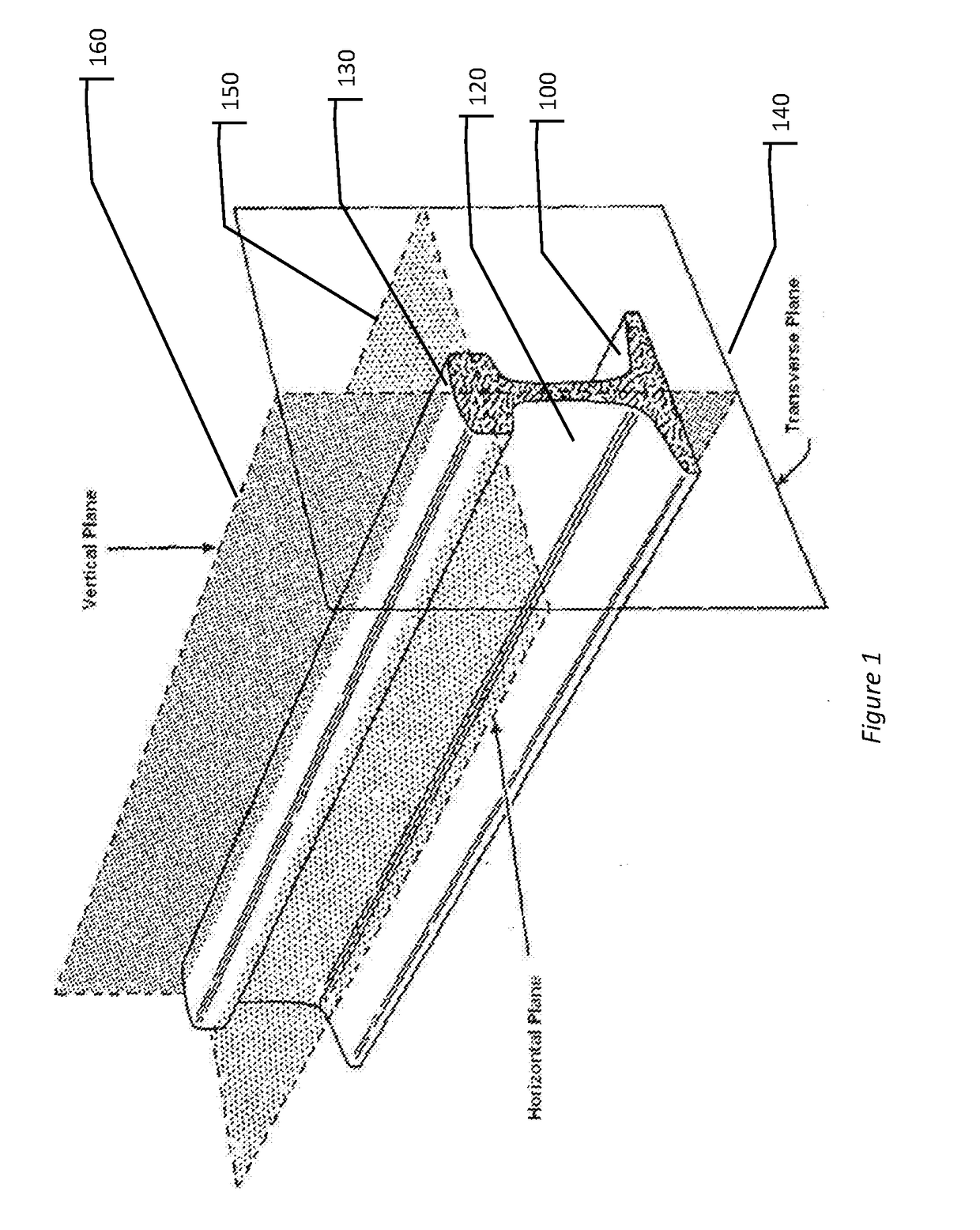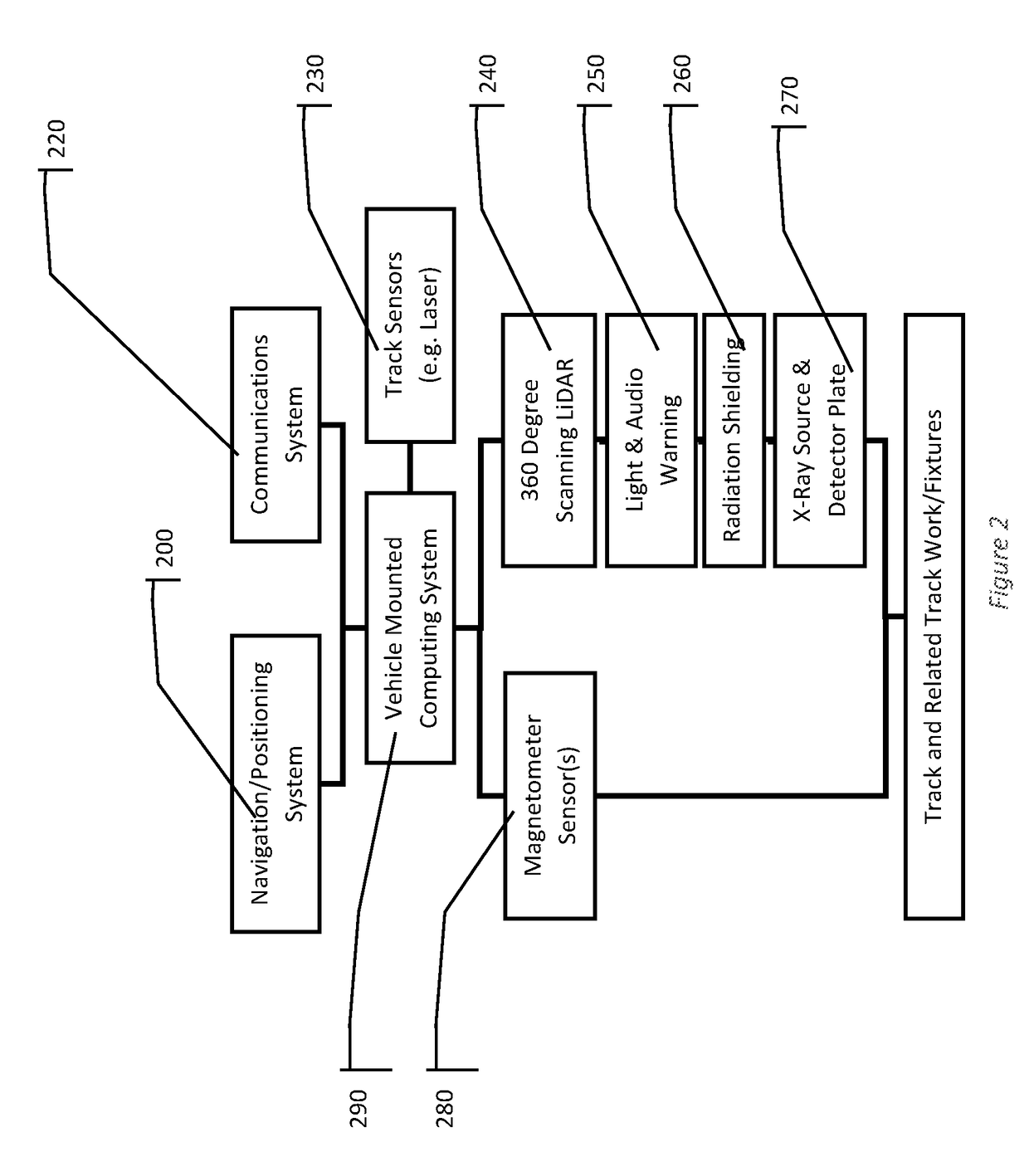Combined Passive and Active Method and Systems to Detect and Measure Internal Flaws within Metal Rails
a technology of internal flaws and passive and active methods, applied in the field of rail inspection, can solve the problems of increasing creating air gaps, and introducing false calls, so as to reduce the overall cost of the inspection process, reduce the time required, and quantify the growth of the flaw.
- Summary
- Abstract
- Description
- Claims
- Application Information
AI Technical Summary
Benefits of technology
Problems solved by technology
Method used
Image
Examples
Embodiment Construction
[0062]Terminology
[0063]The terminology and definitions of the prior art are not necessarily consistent with the terminology and definitions of the current disclosure. Where there is a conflict, the following definitions apply.
[0064]Field side—The side of the rail(s) pointing away from the track or the outside face.
[0065]Gauge side—The side of the rail which guides the wheel flange.
[0066]Parallel rails—One railroad track consists of two parallel rails. Standard gauge railroad track has two parallel rails that are separated by approximately 4 feet, 8.5 inches. Other railway gauges exist and may be greater than or less than standard gauge.
[0067]Railroad Track—Consists of two parallel rails, normally made of steel, secured to crossbeams called railroad ties or sleepers.
[0068]Frog—A crossing of point of two rails, usually as a common crossing or V-crossing.
[0069]This can be assembled out of several appropriately cut and bent pieces of rail or can be a single casting. A frog forms part of...
PUM
| Property | Measurement | Unit |
|---|---|---|
| distance | aaaaa | aaaaa |
| magnetic field | aaaaa | aaaaa |
| speeds | aaaaa | aaaaa |
Abstract
Description
Claims
Application Information
 Login to View More
Login to View More - R&D
- Intellectual Property
- Life Sciences
- Materials
- Tech Scout
- Unparalleled Data Quality
- Higher Quality Content
- 60% Fewer Hallucinations
Browse by: Latest US Patents, China's latest patents, Technical Efficacy Thesaurus, Application Domain, Technology Topic, Popular Technical Reports.
© 2025 PatSnap. All rights reserved.Legal|Privacy policy|Modern Slavery Act Transparency Statement|Sitemap|About US| Contact US: help@patsnap.com



